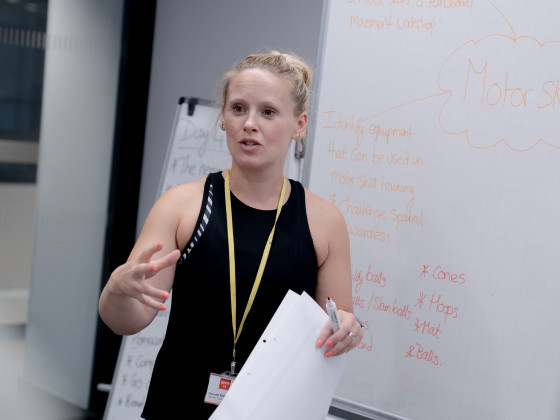Barre 101: What is Barre fitness and what are its benefits?
|
Barre workouts have become all the rage in recent years, and you’ll often see it offered at studios alongside Pilates and yoga. But what is barre exactly, and what kind of benefits can you expect when you start doing barre workouts?
What is Barre?
Barre is a full-body workout that was originally inspired by the foundations and techniques of ballet. But not to worry if you’re not a dancer – barre is much more focused on strength conditioning and flexibility than it is on dance. It’s often compared to Pilates and yoga. While there are some similarities between the three, such as the importance of breathwork, the mind-body connection, and a focus on long lean muscles, they’re each unique. Barre typically has a faster tempo and focuses more on repetitions than the others.
A typical barre workout will take you through the primary muscle groups one at a time. Exercises often involve pulses and holds, which keep muscles under tension and cause isometric contractions. You’ll most likely feel that “barre shake” in your muscles as you work – that means the exercise is effective and really getting deep into the muscle!
Small and precise movements are key to a good barre workout. For example, instead of full squats, you may go into a squat position and pulse up an inch, down an inch over and over. For someone observing, it may look like your body is barely moving, but trust us, you’ll feel the burn!
Barre is also celebrated for the way it targets small muscles that may be tough to reach in other forms of exercise. It’s common to leave your first barre class feeling sore in deep muscles you’ve never noticed before!
Intensity level: Barre workouts are low impact but high intensity. You’re likely to work up a sweat and feel the burn while doing barre, but it’s also easy on joints and won’t have you gasping for breath.
Equipment: A ballet barre is often used for balance, but you may also lean on a wall, table, chair, or countertop when doing barre at home. Barre workouts are primarily bodyweight, but instructors may incorporate light weights, resistance bands, or barre balls.
Who should do barre: Anyone and everyone! Barre is appropriate for all ages, sizes, and fitness levels. The low impact nature also makes it a great option for those with limited mobility or who are recovering from injury. Barre instructors are always happy to accommodate people of all athletic abilities and can show you modifications to exercises if needed.
What are the benefits of Barre?
There is so much to love about a barre workout! Here’s a taste of what you can expect when you start doing barre workouts:
- A stronger core
- Improved posture
- Sculpted muscles, particularly the small, hard-to-reach ones
- Better balance, coordination, and flexibility
- Reduced stress
- More stamina and endurance in your daily activities
And the number one benefit of barre – it’s so much fun! Many instructors set their barre routines to upbeat music that will leave you feeling energised and ready to take on the day!
Train as a Barre instructor with YMCAfit
Do you want to help others discover just how fun and effective barre workouts can be? Our Total Barre™ Instructor Foundation course is the perfect option! The course is operated by Merrithew® as a one-day course that takes you through the fundamentals of barre and will prepare you to lead your own barre classes.
Head to the Barre page of our website to learn more about the course, view upcoming dates, and get in touch with one of our course advisors to reserve your space!









